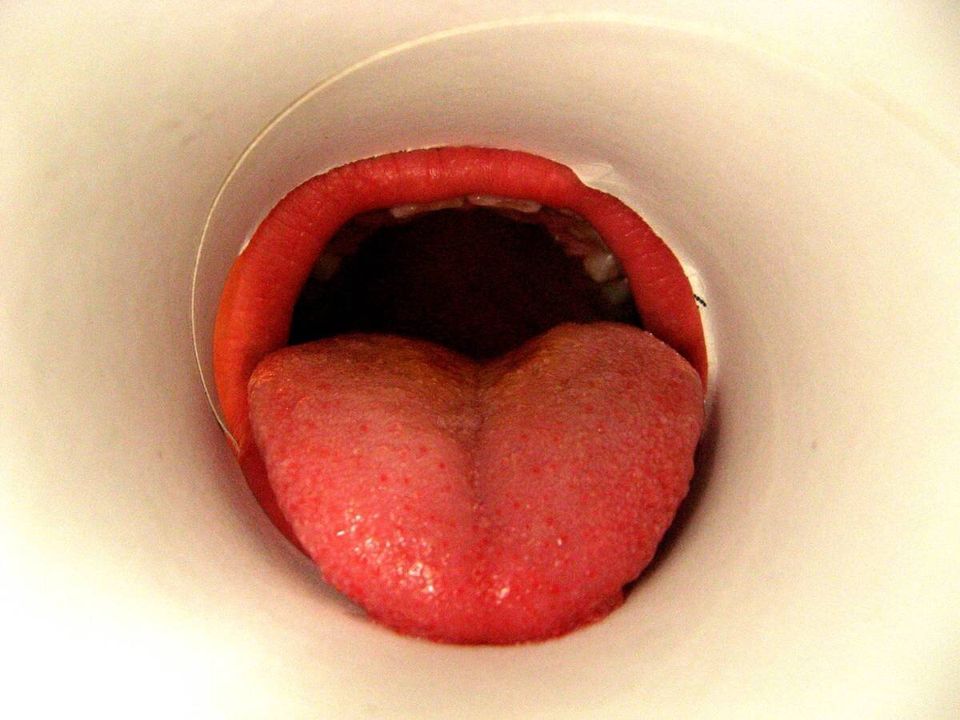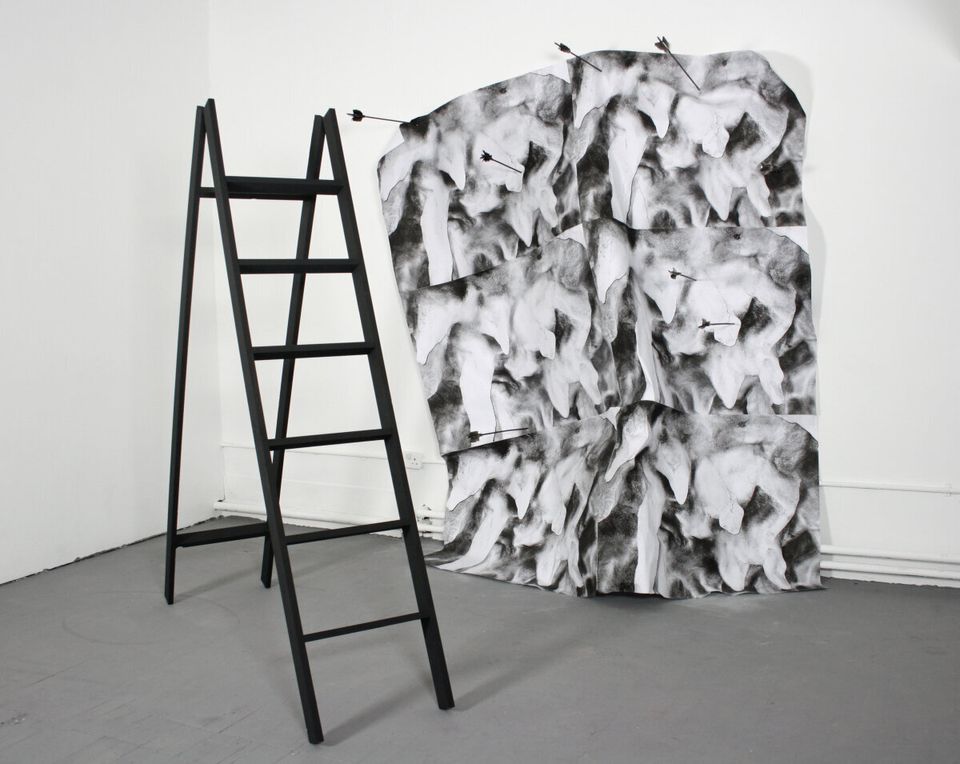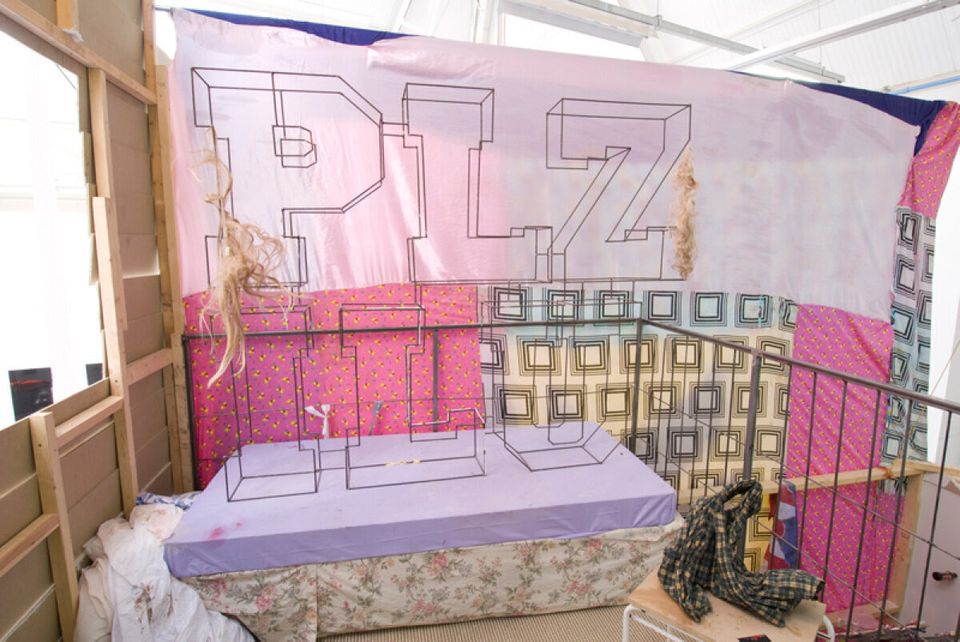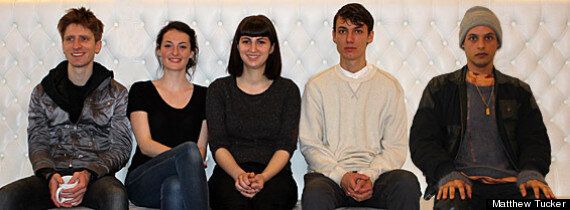
Left to right: Joseph Steele, Ella McCartney, Kitty Clarke, Ed Fornieles and Adham Faramawy
This year, the artists who once epitomised all that was new and rebellious about British culture took their final step towards being part of the institution.
Damien Hirst - once the chief rabble rouser of the group we labelled the ‘Young British Artists’ - will welcome thousands of tourists to his major retrospective at the Tate Modern as our official Cultural Olympiad.
Tracey Emin, his equally infamous YBA companion, dominated the Hayward Gallery last year with her own retrospective, while Gillian Wearing, the 1997 Turner Prize-winner, is currently giving the Whitechapel Gallery the same treatment.
In 2012, the champagne-swilling wild-childs of the 1990s have become household names, brands - no longer the unpredictable protégés of Charles Saatchi but middle-aged moneymakers themselves.
In the process they’ve earned the right to look back on 20 years of helping to shape British contemporary art.
The question is: who is looking forward?
Meet Edward Fornieles, Kitty Clarke, Joseph Steele, Ella McCartney and Adham Faramawy. As the YBAs did two decades ago, these five young artists have graduated from British art schools, live and work in London and are producing exciting and innovative work that is starting to make an impact.
But while their predecessors found themselves ascending to fame and fortune through the pages of glossy newspaper supplements to the backdrop of a Labour government in the midst of an economic boom, their heirs are operating in a changed world, where the advantages of the internet and new technology are tapered by economic depression and relentless cuts to art funding.
We invited them to show us their work and explain what the future looks like to today’s YBAs. What are the challenges facing our new generation of British artists? Can they really hope to emulate the success of their predecessors? And, perhaps more to the point, do they even really want to?
Jump to:
JOSEPH STEELE
ADHAM FARAMAWY
KITTY CLARK
ED FORNIELES
ELLA MCCARTNEY
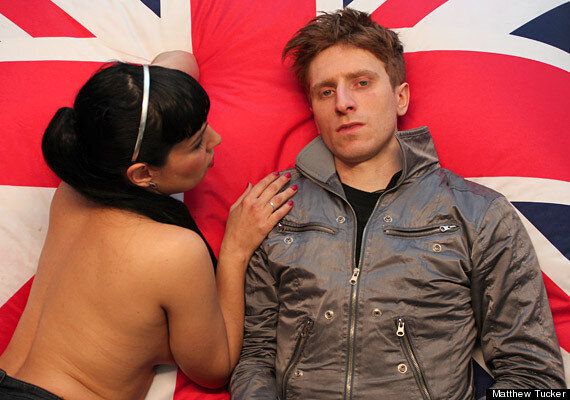

Joseph Steele wants to make art about sex, death, religion and war - and he does, in very different ways. Since graduating from Newcastle University’s Fine Art School, he has filmed a live porn at an exhibition opening, re-written the entire Bible replacing every reference to Christ with his own name, and gotten into an argument on television with a group of art critics who disliked his reinterpretation of Hokusai’s iconic Mount Fuji made from thousands of photos of Japanese cars (below). Steele is currently creating a film about a homeless woman, and is represented by East London’s Arbeit gallery.
JOSEPH STEELE'S MOUNT FUJI
How would you describe your work?
I practice a wide-range of forms. I make films, I paint with explosives, I do performance work, I do normal paintings and 2D print work. I’m not afraid to go somewhere that might be scary psychologically or not really work as a piece of artwork. For example, Bible was more of a research piece. But I think it’s important that I did it, and I think it’s never a bad idea to experiment. That’s the most important thing, never to stick to the same thing, and always be pushing yourself, no matter what the consequences.
WORK IN PICTURES
How important is being controversial to you?
I think I’ve grown up a lot since filming my friends having sex, showing it in a gallery and having to live out the consequences in court [in 2009 Joe was unsuccessfully sued by a gallery in Newcastle after making a porn film in their exhibition space]. I’ve learned a lot from that. Yeah, it is important to get people’s attention but you can’t build a career from something that has no real foundations, because you’ll get found out in the end. It’s something I will continue to do, be controversial, because it’s funny. You have to have a sense of humour in your work - you can’t be all ivory tower about it. I’m not very good at lofty, intellectual art.
What do you want to achieve with your art?
I find that when I'm speaking to gallerists, I feel like I’m talking a different language. When I say I want to make art about sex, death, religion and war, I mean that, if you’re going to make art, you might as well make it about something big.
JOSEPH ON THE YBAs
What's different for today's generation of artists?
I think the Damien Hirst show is a big legacy of the YBAs, and it says a lot about what they really meant. I think now we’re figuring out what that time meant. They were all wrapped up in the whole Britpop thing, and Labour coming to power and were told that everything’s going to be amazing. And now the situation we’re in is a global crisis.
Jump to:
JOSEPH STEELE
ADHAM FARAMAWY
KITTY CLARK
ED FORNIELES
ELLA MCCARTNEY
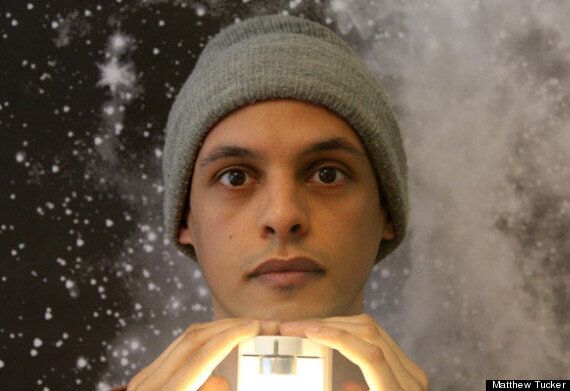

Dubai-born, London-raised Adham Faramawy makes videos and performance art that have been making psychedelic waves everywhere from East London blogs such as DazedDigital and I-D to the Tate Britain, where he put on a piece called I Can Do Impossible Things. Faramawy is a truly digital artist - something he says might be partly down to his mother’s love of Photoshop - who finds inspiration in everyday stories and rituals. A graduate of The Slade School of Fine Art, Faramawy is currently one of the 17 students on the Royal Academy’s post-graduate course. His work is currently on show at Gallery Vela.
WORK IN PICTURES
How would you sum up your artwork?
I work predominantly in video but I also take photographs and make sculptural installations and assemblages. I like to apply science fictive images and narratives to everyday occurrences.
WATCH 'TOTAL FLEX'
What are your ambitions with your work?
So much of what I do is fuelled by a passion to be able to manipulate digital media. I’d like to be able to wield digital images like painters wield paint. I want to be able to deal with a level of Hollywood production that means anything I think of can become a visual reality.
Do you think that the digital focus of your work is unique to this generation of artists?
I think a lot of people think of those who are working now as the third generation of digital artists. I think the first generation is somewhere mid-90s, and then, the early 2000s and now this is the third generation. I’m way down there.
ADHAM ON THE YBAs
Are there unique pressures on your generation of artists?
I don’t know that there are unique pressures, but there are definitely urgent pressures - the shift in financial models that we’re coming across. The co-opting of traditional languages by Conservative politicians is quite an interesting moment. We are are coming across a moment where traditional politics aren’t relevant anymore. How we deal with that, and re-define ourselves in relation to what’s happening outside is quite exciting. Terrifying, and exciting.
Jump to:
JOSEPH STEELE
ADHAM FARAMAWY
KITTY CLARK
ED FORNIELES
ELLA MCCARTNEY
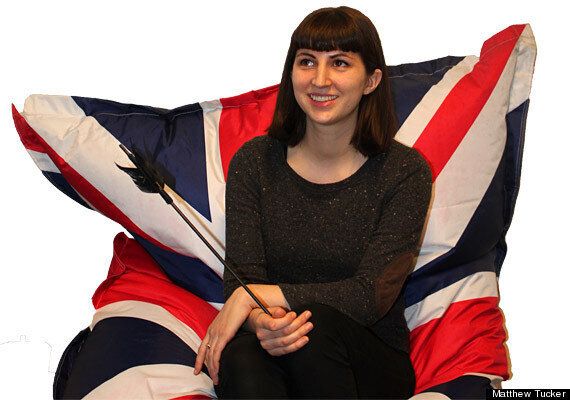

Kitty Clark makes minimalist, fun and yet perturbing sculptures that refer to traditions and stories. So far this year, Clark has had a solo show in London and exhibited in Blackpool and Leeds. She graduated from Slade School of Fine Art in 2011.
How would you explain your work?
I like to make objects that feel recognisable and tangible, yet strangely unreal. My work has a simplistic, cartoon-like aesthetic. They’re mostly hollow wooden structures finished with paint. Though they’re playful and visually simple, many of the objects tend to have cryptic origins referencing historical and contemporary sources that inspire me, from medieval arrows to haunted houses.
WORK IN PICTURES
What motivates you to make art?
I’m really interested in traditions and rituals, and how we treat those things in modern life. I’ve been to places that I would consider ‘recreational pilgrimages’ - like Disneyland, or Stonehenge on the summer solstice - and they’re both very different places, but they both have a contested history and a lot of beliefs projected onto them.
What do you think are the pressures on young artists today?
Obviously there’s a lot of debate at the moment about the cost of education, and I think future generations will suffer from having less access to arts education. I think that’s a big problem. I still feel really lucky that I was able to study what I have studied at all.
KITTY ON THE YBAs
How do you feel about your contemporaries?
I'm very lucky to be working alongside a really exciting group of young British artists exhibiting work across the UK at the moment, and I'm really encouraged by the thought that there is an audience for the kind of work we are producing.
Jump to:
JOSEPH STEELE
ADHAM FARAMAWY
KITTY CLARK
ED FORNIELES
ELLA MCCARTNEY


Edward Fornieles makes Y-Generation art - work that reflects an adolescence influenced by the American-gloss of Facebook, noughties college movies and online porn. It’s possible that most people over 40 wouldn’t recognise his spoof Facebook film dorm daze as a fake. Fornieles’ has performed alongside design legend Ron Arad in the Barbican and shown his frat-party project Animal House II in the Royal College of Art, where he completed an MA in Sculpture last year. He is now represented by Carlos/Ishikawa gallery.
WATCH ED'S FACEBOOK SITCOM DORM DAZE
How would you explain your work to somebody who doesn’t know what you do?
It’s like a very complex cake, with 15 layers and elaborate figures made of marzipan on the outside, but when you cut into it you realise it’s not a cake at all but a very compact, sleek, black sports car.
What do you think makes your work special?
I’m interested in the ordinary. I’m interested in what’s popular, because what’s popular is powerful and if that makes it special then I’m happy to go along with it. My ultimate aim would be for people to consume my products without even realising it's art, and maybe without realising they’re consuming anything at all. Like a good website, or Evian, or an episode of Gossip Girl.
WORK IN PICTURES
What do you make of the original YBAs?
The thing about the YBAs is that they were so angry all the time, even when they were drinking champagne. I think we should be more happy. You know I think the world is a more angry place now, but I think you should still enjoy each glass while you can get it.
ED ON HIS WORK
What would you like to achieve with your work?
A lot of things. I’d like to make more work, probably, that’s number one. I’d like to make better work, I don’t know if it’s possible to make faster work, but I’d like to make faster work.
It kind of sounds like an internet connection?
Maybe, yeah. I feel like the way I’m talking about it it sounds like a very slow internet connection, but yeah, maybe.
Jump to:
JOSEPH STEELE
ADHAM FARAMAWY
KITTY CLARK
ED FORNIELES
ELLA MCCARTNEY


Ella McCartney’s work pushes the boundaries of physics and chemistry to make art that sometimes disappears even while being exhibited - like her light-sensitive photograms. She says she is more motivated by the artistic process than the finished result, though the end product of what she does has been good enough to be entered into the Saatchi-collection, as well as earn her a funded residency in Bow. Having graduated from the Royal Academy of Art in 2011, McCartney’s work has been shown across Europe, including in the ICA’s New Contemporaries show and Savage Messiah, curated by gallerist Rob Tufnel.
WORK IN PICTURES
How would you explain your work?
I try and use different materials. Different applications of photography are also integral to my work - taking photographs of my sculptures is often a starting point, but I also use photographic light-sensitive paper to create an image using only light, without the use of a camera at all. I also like to set myself challenging tasks, like making a sculpture made entirely of Tippex.
Do you think there are different pressures on being a young artist today?
I think things are different now, definitely. With the internet, artists have control over what they put out there now, so some control’s been taken back. It also means we can access information differently, whether that’s finding out where to get things made, or communicating with different artists. I don’t know if it’s harder, although with the economy we have at the moment certain materials and metals are more expensive.
Jump to:
JOSEPH STEELE
ADHAM FARAMAWY
KITTY CLARK
ED FORNIELES
ELLA MCCARTNEY

